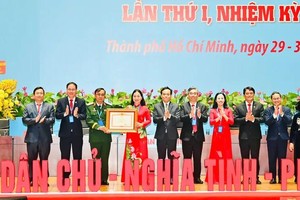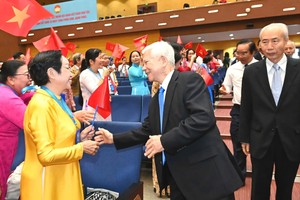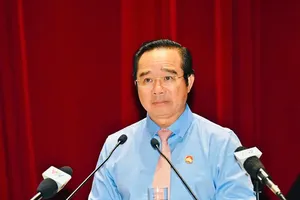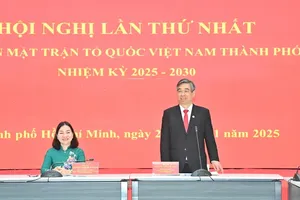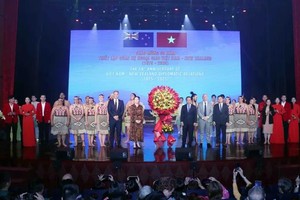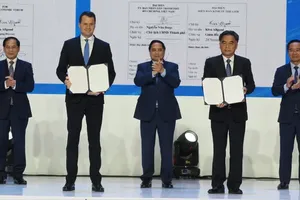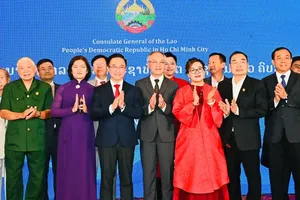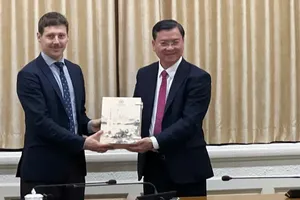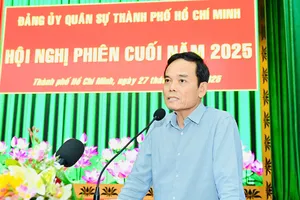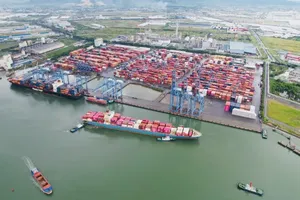 Ho Chi Minh City meets the conditions for international financial center.
Ho Chi Minh City meets the conditions for international financial center.
Ho Chi Minh City ideal location
Many international financial centers are emerging across economies today, and have become an integral part of special economic zones (SEZs). For instance, the international financial services center (IFSC) is located in a multi-purpose special zone in the Gujarat International Financial Technology City (GIFT City) in India, and based on Articles 18 and 55 of the 2005 SEZ Act of India, similar to other models in China and the United Arab Emirates.
In the 4.0 revolution era, developing countries have to turn more and more towards new generation SEZs providing better high technology, finance, tourism, environment, urban regeneration, and move far beyond just manufacturing activities. The earlier land-rich, labor intensive industries of traditional SEZs were commercial and productive. Based on a new approach, Vietnam needs to focus on developing new generation SEZs following the model of digital free economic zones (DFTZ).
With a population of nearly 100 million people, Vietnam has the potential to become a technology pillar of the region, with an estimated market value of US$ 2.2 bn, along with many other formidable tech startups such as FastGo, Abivin, Logivan, and VNPay. This possible potential market is witnessing a wave of venture capital funds flooding Vietnam. However, shortcomings in tight financial and securities regulations have caused setbacks in technological innovation and venture capital sources.
It is now time that Vietnam finds a breakthrough mechanism to create DFTZs. With favorable conditions, and right human resources, Ho Chi Minh City is well conditioned to meet the many requirements to establish an exclusive Financial District within its territory that will provide full support and adequate facilities for finance, technology, world class innovation, and creativity.
Digital economic sovereignty
Mr. Ruchir Sharma, the chief global strategist at Morgan Stanley Investment Management, and also author of the famous book "The Rise and Fall of Nations", thinks that only technology can save emerging economies from stagnating in their growth rate. Dubai is a leading international financial center with a 110 hectare of Free Zone, an advanced retail network, infinity pools, and many other modern facilities. However, it is currently reeling under the strong negative impact of the Covid-19 pandemic, and changing patterns of behavior of lucrative investors who are reconsidering the present post-pandemic situations. On the other hand, a country such as Romania, a country once under notice because of frequent electricity outages and near empty retail shops, has now sprung into prominence. In February 2021, UiPath, a technology company based in Bucharest, was shocked when it was able to raise unexpectedly huge capital in New York to the tune of around US$ 35 bn.
With steadfastness, steely determination and strength, Vietnam can certainly create another technology unicorn like UiPath. However, in the current digital age, countries must remain interdependent too, while simultaneous attention must be paid towards national security as well. Malaysia's DFTZ model with Chinese partners was formed in March 2017, and it has since brought in impressive results, now even contributing to higher economic growth and more jobs. SMEs are now attracting more foreign investors into Malaysia, mainly from China. However, from a defence standpoint, the country is facing many uncertain vulnerabilities. According to South Korean security agencies, about 70% of their technology leaks that took place between 2014 and 2019 came from China.
To counter China, the Council on Foreign Relations of America (CFR) suggested that the government should create a similar DFTZ with many Asian partners. However, ASEAN countries should welcome both Chinese and American technology companies. In late 2020, China announced the establishment of Beijing's Free Trade Zone (FTZ) as the ideal place for a global startup innovation hub, focusing on digital payment methods. The Central Bank of China has even established a legal digital currency zone and a Digital Financial System at FTZ Beijing.
However, in terms of approach, Cambodia has decided to choose a Japanese fintech company to develop digital Bakong for its Central Bank. National security and digital economic sovereignty are always considered vital factors for the future of DFTZs and international financial centers, a fact that Cambodia is concerned about.
Optimizing talent
It is not enough to just mention the technical aspects when talking about DFTZ. Special attention should be paid to the process of optimizing talent selection, and attracting and retaining outstanding global talent. The UK, while imposing tax exemptions and reductions in the R&D sector, radically changed the rules of stock market listing, creating a technology and innovation finance center, and a privately funded growth fund, sponsored and coordinated by the government. However, the UK planners never forgot to put the primary focus on talent selection to create a big fintech explosion, so as to ensure that UK remains a leading Financial Center.
Japan has already taken first steps in hiring 500 world renowned technology experts to work in the public sector to prepare for the government digital transformation plan. Japan believes that slow digitization is the key in low growth potential for so long, hence the time is right to digitize the economy.
Vietnam too needs to rethink about selecting talent that are computer savvy and fluent in finance and banking. In neighbouring countries, ambitious plans are being drawn to attract talent and ambitious national strategies are being set to move towards digital economy, particularly with all the economies reeling under the ongoing and relentless Covid-19 pandemic. Many startups have already raised unprecedented volumes of capital to around US$ 47 bn in the first quarter of 2021, in the international markets.
Meanwhile, policymakers in Vietnam remain ambitious about making the country a leading technology powerhouse, although there is absolutely no plan to attract world class talent. Therefore, it is imperative for our country's policymakers to quickly set a process to optimize the selection of international talent from other countries before the development of any future strategies.
Setting up DFTZ
The great division between US-China policies is an opportunity for countries to take advantage of in the current context. In addition to issues related to technology and supply chain, there are gaps in the setting up of DFTZs that Vietnam can make good use of.
The first is to capitalize on financial innovations that are becoming a global craze, as a result of low interest rates, and stock markets consistently at all-time record peaks. Economic optimism and digital transformation happens rapidly in many fields where huge cash flows freely.
All of this has led to an explosion of the Special Purpose Acquisition Company (SPAC), to make it faster and more convenient for private companies to be publicly listed. In Southeast Asia, Grap is preparing a US$ 40 bn listing in the US through SPAC. In March 2021 alone, global capital transactions reached US$ 1,400 bn, the highest increase in two decades due to enthusiasm in SPAC deals. Southeast Asia, with its startup boom, is seen as the ideal destination for SPAC, and South Korea and Malaysia officially allowed SPAC to list on the stock exchange. Hong Kong and Singapore are considering different approaches to making SPAC the engine of economic growth, or loosening of listing rules that facilitate the creation of technology companies.
Taking advantage of the opportunity, GIFT City in India has just added new rules allowing SPAC transactions. The UK is also considering changing the stock listing rules to become the global base of SPAC in order to maintain a lead position as an international financial center.
With special economic financial sectors, DFTZ is now not simply piloting institutional reform as was previously understood, but is rather a flexible tool to make effective use of immediately. The boom has been created from global uncertainties to attract huge circulating capital. In addition, DFTZ is also a global talent gathering institution. The volatility of Hong Kong's international financial center was the driving force behind the British proposing new rules to attract talent.
Taiwan has many young technological talents but lack the spirit of entrepreneurship. The Covid-19 pandemic suddenly turned it into a place for receiving American technology experts to start businesses. Suddenly they have outstanding international talent coming to support young local startup talents to access and turn the place into an Asian Silicon Valley. Taiwan is loosening immigration regulations to attract more international talent, and supporting young talented people who have dared to drop out of school for two years to pursue startup dreams. By the end of 2020, China established FTZs in Beijing, Hunan, and Anhui, in which priority is on responsibilities in all levels of selection of international talent.
Vietnam has many advantages with which to attract outstanding talent, being among the very few countries in the world that are still well protected from the pandemic. Even though it is uncertain when the pandemic will finally end, Vietnam’s economy is holding steadfast. Now is the time to vigorously establish a long term vision in a short term scenario, by taking advantage of a golden opportunity of establishing superior institutions in the DFTZs. It is vital to move quickly and decisively in attracting global capital and global talent in the current pandemic scenario, when availability is rather high.
Integrate advantages
In wake of the current pandemic, if Van Don also has ambitions to become an international financial center, then there can be three cities in Vietnam willing to establish such plans for the future.
Financial experts and investors liken the European Union (EU) with 27 countries competing and overlapping interests in financial services with 27 lines on a single sheet of paper. This makes it difficult for Paris, Frankfurt, or Brussels to replace London as the leading international financial center. Vietnam, with three international financial centers, will also look cramped, in proportion to the size of a narrow S-shaped strip of land. The departure of the Shenzhen SEZ from other Chinese SEZs is a valuable lesson in the massive development of international financial centers and SEZs.
To avoid hitting bottom, a worthwhile suggestion is for us to study the three FTZs of Beijing, Hunan, and Anhui. There highly internationalized technology and business environment attracts many international and domestic investors. If we follow their model, Vietnam's future finance, technology, and innovation cities such as Ho Chi Minh City, Da Nang, and Van Don will work well together to avoid risks and instead flourish together to stay on top.
There is no second planet for humans to inhabit, and there is also not much land or sea left for future DFTZs in beautiful locations on our S-shaped strip of land. Ho Chi Minh City ignored the opportunity to turn the special Ba Son Port into a creative urban area, as proposed by the United Nations Industrial Development Organization (UNIDO), which is a mistake that must not be repeated.
Developing technology oriented regions and creating international financial centers is worth pursuing, and is certainly the right direction in moving towards a fast changing digital world that is set to bring about changes across the globe which all developing nations will need to adapt to quickly and surely.
